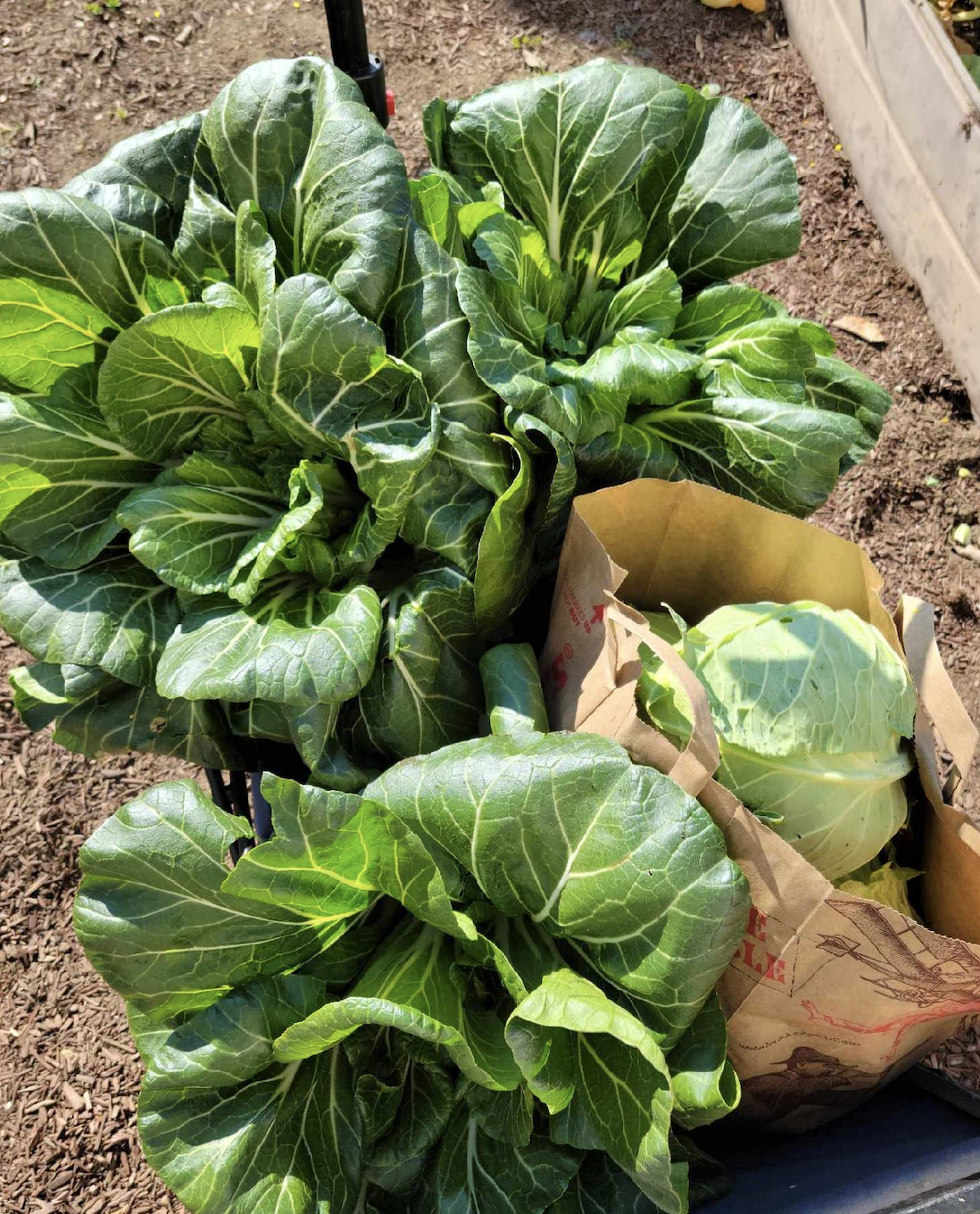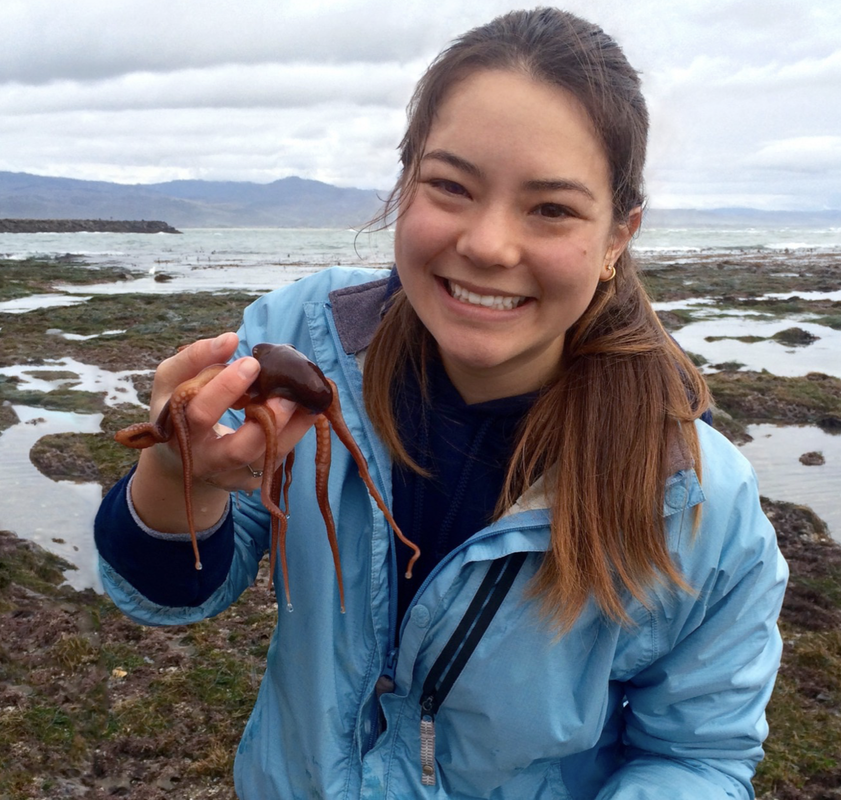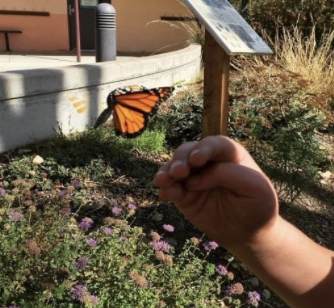|
February and March are a great time to do these five gardening activities in Northern California:
Today we will talk about what we have done in Living Classroom. First we will give you a brief history of tomatoes which were also our main topic for the first and second classes. We first talked about where tomatoes were first found. We learned that tomatoes were first found in Chile, South America. A while later they were transported to Mexico, then Southeast Asia , and finally England.
The first known tomato recipe was published in Naples, Italy. At this time eating tomatoes had caught on in France, Spain, and Italy. Thomas Jefferson wrote about people growing tomatoes in colonies, we know that some people were eating tomatoes in the U.S.A by then. Nowadays, tomatoes are a very popular fruit in the world. 1.5 billion tons of tomatoes are grown and sold in the world. The Most Popular States That Grow Tomatoes Are :
In the first lesson we had a map and a tomato journal. On the map, we drew tomatoes to show where they traveled. We also got to cut open a tomato and scooped out the seeds. In the tomato journal, we used words to describe how the seeds felt. We thought it was gooey, slimy, slippery, and lots more. The second lesson was after a few weeks. So we investigated the seeds week by week. Almost every cup had mold and yeast in it. We could only see the mold, not the yeast. We got into groups. If the cup had your name and your partner’s name on it . So, we got into groups of four and we first opened the cup and scooped all the mold out . Then, we gently drained the water from the cups. Next, after draining the water we rinsed the seeds three times . Finally, we gathered all the seeds and saved them to plant in the spring. So with all that work covered that is what we have been doing in our past 2 Living Classroom lessons. The Kendra Chan Conservation Fellowship, a first-of-its kind annual program, honors the late wildlife biologist Kendra Chan (Living Classroom Founder Vicki Moore's daughter) by giving budding scientists an opportunity to learn about the U.S. Fish and Wildlife Service’s mission and help endangered species. The fellowship is a two-year commitment and is available to students with a demonstrated interest, education, and/or experience in conservation, and who are enrolled or accepted for enrollment as a rising senior or senior in an undergraduate program. Click here to learn more about the Kendra Chan Conservation Fellowship and the amazing research that it supports.
Daniel Cisneros stood atop one of the highest peaks on Santa Rosa Island off the California coast, admiring the island oak and bishop pine trees, an ancient forest among the clouds brought back to life after years of human disturbance. Cisneros, an ecology student at the University of California, Santa Barbara, is working with the U.S. Fish and Wildlife Service and Santa Barbara Botanic Garden to conduct a germination study for five rare plant species on the Channel Islands. The work will shed light on the role seed banking can play to help struggling plant populations. Cisneros’ research is made possible by the Kendra Chan Conservation Fellowship, a first-of-its kind annual program that honors the late wildlife biologist Kendra Chan by giving budding scientists an opportunity to learn about the U.S. Fish and Wildlife Service’s mission and help endangered species. “I feel honored to be part of Kendra’s long-lasting legacy,” he says. Chan, a wildlife biologist with the Service in Ventura, was passionate about endangered species and connecting people from all walks of life to science and the natural world. A Southern California native, Cisneros says he feels a personal connection to the Channel Islands. “I see them every day from campus in Santa Barbara. I want to save plants in my own backyard.” Through the fellowship, he is collecting data on the federally endangered soft-leaved paintbrush which dwells in only two cliffside locations on Santa Rosa Island. Chan also championed the importance of diversity in conservation, and Cisneros aims to carry on that legacy by engaging communities in collaborative conservation and environmental stewardship. “Our world has a variety of plants, animals, and fungi, all of which have their own differences, but are interconnected in so many ways,” says Cisneros. “We too, [as humans], occupy different niches in our society, and we all contribute to a healthier environment in general. We don’t have time to limit conservation to a select few anymore.” Chris Diel is an assistant field supervisor with Service in Ventura. “Kendra was passionate and curious and ready to take on new challenges,” he says. “She was able to bring everyone together to achieve conservation goals — from academia to agencies to private landowners. She brought positivity and inspiration that those common outcomes were possible.” Diel helped form a team from across the country to design a unique fellowship that combines the long-standing Service’s Directorate Fellowship Program with the Ecological Society of America’s leadership develop program. “After losing Kendra as a member of our team and our agency, we asked the question, how can we carry on and embody that potential that we saw, and the traits we observed in her, into the future?” The fellowship is a two-year commitment and is available to students with a demonstrated interest, education, and/or experience in conservation, and who are enrolled or accepted for enrollment as a rising senior or senior in an undergraduate program. Successful fellows may be eligible for a permanent position with the Service after successfully completing their fellowship and degree requirements. “This program has solidified my desire to go to graduate school to study botany more,” Cisneros says. “I would still like to be a biologist with USFWS — everyone is so passionate about what they do, and I want to contribute to that.” Cisneros will present his findings at the 2022 Ecological Society of America annual conference. Kendra Chan joined the Service through the Directorate Fellowship Program in 2016 after graduating from the University of California, Davis. She served as a biologist with the Service in Ventura until 2019. “Kendra was a remarkable human being. Her positive energy enriched the lives of those she touched through her love of nature, wildlife and the outdoors. She was a force for good and led a life that made the world around her a better place. She loved the ocean, from surfing and diving to tide pooling. Her passion, curiosity and enthusiasm for all living things — from tiny skeleton shrimp to the tidewater goby — were infectious. Not only was she a colleague, but a friend to us all. We miss her dearly and carry her energy with us in all the days ahead.”— Staff of the Ventura Fish and Wildlife Office The best way to raise a new generation that will care about - and act to protect nature - is to provide frequent experiences in the natural world. Schoolyards are critical spaces for educating and inspiring the next generation of environmental stewards. Adults can learn that they can play a role in providing habitats by their choices of how they landscape, and that they can be environmental stewards as well. Living Classroom’s lessons teach students that they can make a tangible difference in the world. As our children mature, they are informed by an ecological understanding and conscience. Native habitat gardens and landscaping are a central piece of a wider vision to restore our relationship with the natural world. As adults, we have the power to bring nature to every child, every day, while improving our local ecosystems, learning environments and health. In the Living Classroom, nature is our teacher. We know that understanding the principles that sustain ecosystems requires basic ecological knowledge. Many of the central principles of ecology are variations on a single fundamental pattern of organization: nature sustains life by creating and nurturing communities. Organisms cannot exist for very long in isolation. Animals, plants, and micro-organisms live in webs of mutual dependence. Monarch Butterfly visits native school garden planted with native Milkweed Living Classroom native habitat gardens include wildlife attracting features and provide the following important benefits:
Examples of native front yard and backyard plantings
These same benefits can be applied to the broader community with native plantings on private and public properties. For information about how to get started in turning your front yard, backyard, or both, into a habitat for wildlife, please go to the following sources: South Bay Green Gardens at https://www.southbaygreengardens.org/ California Native Plant Society: https://gardenplanner.calscape.org/ Both of these sources provide design ideas, planting plans and lists of appropriate native plants based on the specifications of your yard, ie., sunny, shady, large, small, style (formal versus natural), and so forth. Local nurseries that carry native plants are listed on the websites. Appropriate irrigation supplies are also described. If you live in Santa Clara County, Valley Water is now offering rebates for residential single-family homes, multi-family developments, and commercial properties of $2 per square foot when lawn is replaced by native or drought tolerant plants with water conserving irrigation. Go to: https://www.valleywater.org/saving-water/rebates-surveys/saving-water/rebates-surveys/landscape-rebates to learn more about the rebates. Rebates are up to $3,000 for residential and $50,000 for commercial or multi-family developments. Understanding that our landscaping and gardens can and should serve as habitats is a paradigm shift that Living Classroom has been advocating for years. We can all be involved in restoring our local ecology. Living Classroom has been creating native habitat gardens on school campuses for ecology and ethnobotany lessons and the principles behind the plant selection and design of these school gardens apply to landscapes and gardens everywhere.
Landscaping no longer should be strictly ornamental; rather, think of our gardens as being beautiful and habitat creating. With path-breaking books, research studies and reports on this topic, it’s clear that there is great potential to restore our local ecology through a constellation of biodiverse and native gardens and landscaping within our urban and suburban communities. School grounds are an important component to this ecological resilience movement as they comprise many acres scattered across our communities. Schools offer an amazing educational benefit for not only students, teachers and parents but also a broader neighborhood base that uses the school grounds on a regular basis. However, residential front and back yards, commercial and industrial landscaping, public parks and other private landholdings can all be landscaped with habitat providing native plants. These spaces can also provide environmental health benefits such as urban carbon sequestration, capturing stormwater runoff, air quality improvement, and ecological resilience--all important components of green infrastructure in preparation for climate change. In his books, Douglas Tallamy (Bringing Nature Home, Nature’s Best Hope, and The Living Landscape: Designing for Beauty and Biodiversity in the Home Garden) presents overwhelming scientific evidence of the impact that native vegetation has on helping to increase the species diversity and populations of native wildlife. Planting mostly non-native trees, shrubs, perennial, annuals and groundcovers attracts only a small fraction of the wildlife as compared with native plant species. Large reductions in the insect populations, for example, impact the food chain many layers up the chain including songbirds. In order to save our songbird populations, we must ensure there are ample insects, including caterpillars, for them to feed to their young. In Bringing Nature Home, Tallamy states that by simply replacing most home lawns, which comprise between 32-40 million acres of land across the country, would collectively restore habitat over more acres than our National Park System. As Tallamy states, we can create our own “Homegrown National Parks” by planting native plants in our yards. Bonus Benefit: Water Conservation! If boosting wildlife diversity and populations isn’t enough, native gardens also conserve water. Most Californians live in a Mediterranean climate, meaning that we have a very long stretch of six or more months of warm weather and no rain, then six or less months of cooler, rainier weather (except these last two years—we are now in a drought). Native plants adapted to this Mediterranean climate need very little water during the dry months of the year and, once established, a small fraction of water, as compared with lawns and most non-native plants. Some shade loving native plants require relatively more water as they are adapted to moist environments along creeks and the understory of trees. Native plants also adapt to the soil types in which they evolved, therefore chaparral and coastal sage scrub plants prefer “nutrient poor” soils as do desert plants which thrive in sandy soil. Eight years ago I taught my first Living Classroom lesson, “Life Cycle of a Tomato” for a class of 24 second
graders. I could hardly believe my new job was to take students outside (during the school day!) to teach environmental education lessons. That first lesson was a blur--anxiously I stumbled through the vocabulary words, corralled the students through several activities, and ensured the parent volunteers were set up with the necessary materials to assist. The hour flew by as the students squashed tomatoes with glee for seed saving. Before I knew it, they were in a line to head back into the classroom. I asked the teacher how she thought the lesson went. She said, “I think you need to slow down.” I exhaled. She was right--why was I rushing the students through this experience? I had the opportunity to let this hour together outdoors be truly meaningful, to let kids explore, discover, and feel joy. Here’s a chance to bring what they are learning in their science textbooks to life through engaging, real world activities. One of our students said it best, “I like this program (Living Classroom) because a kid can go outside and get dirty. Most of all, a kid can do the real stuff.” As environmental educators we get the unique opportunity, and responsibility, to slow down with students and point out the “real stuff.” We get to say, “Look! THIS is nature, and it’s right outside your door. See this leafy green top? Yes, you can pull it! You really have to yank it! Wow! Can you believe it? That’s how carrots grow! Isn’t it like magic?” It’s understanding that an heirloom gets passed down from generation to generation, an item to treasure, and seeds can be heirlooms too. They will produce colors and flavors beyond our imaginations. It’s discovering that milkweed plants grow right outside the classroom window and we walk by it everyday. That plant holds the secret for keeping an entire butterfly species in existence. It’s noticing how your entire heart lifts up as you watch that Monarch land on the milkweed, like there is some kind of order to our world. It’s how we plant tiny seedlings, how they only measure up a few inches tall on our rulers, but we will troop back after weeks turn into months and they are still there, only now proud and bursting, ready to be harvested. It’s patiently watching seeds sprout into green spades of grass, into beds of wheat, that we will lovingly harvest, thresh, and grind into flour, that we will bake into bread to understand what it means to be a producer, to be someone who creates. Through Living Classroom I have met phenomenal teachers who have taught me how to engage students in our curriculum. World class gardeners have taught me the importance of native plants and habitats. I will hold all of this close in my next adventure, but what I will cherish most is the thousands of bright and curious children who have helped me learn the importance of slowing down and appreciating the wonders that exist in a seed, a leaf, or a beetle’s wing. Last week I taught my last lesson as a member of the Living Classroom staff, and it was “Life Cycle of a Tomato.” The students and I took our time exploring the “real stuff” as we shared our favorite ways to eat tomatoes, sketched out the plant’s life cycle with all of the glorious details, and explored varieties of heirlooms. During my time at Living Classroom I hope to have planted a seed that will grow future environmental stewards through the lessons we have created, the volunteers we have engaged, and what the students discovered as they explored nature on their own schoolyards. Full circle, indeed! Looking for some fun activities to do with your little ones this spring break? Spring is the perfect time to be outdoors and experiencing the new growth happening all around. There are many ways to encourage exploration and creativity all while learning about our environment! Here are a few example activities from the Living Classroom lesson archive.
For more detailed instructions and for information on seed saving, please see our Newspaper Pot video.
For more detailed instructions please see our Nature Creatures video.
For more detailed instructions please see our Quiet Leaf Tracing video.
For more detailed information on bugs, specifically decomposers, check out our Bug Hotel video.
Using a trowel, dig a small hole in your container or garden area about the size of a fist. Add a little water to the bottom of the hole. Gently pull the seedling from the pot gently taking care not to harm the root ball. Place the seedling into the hole and cover with soil. Water generously. To get detailed information on how to properly plant seedlings please see our Plant a Seedling video. |
AuthorSecond Grade MVWSD students Archives
February 2022
Categories |
Living Classroom is a 501(c)3 tax-exempt organization | Tax ID #45-5192035 | Donate
Copyright © 2009-2023 Living Classroom. All Rights Reserved.
Copyright © 2009-2023 Living Classroom. All Rights Reserved.




 RSS Feed
RSS Feed